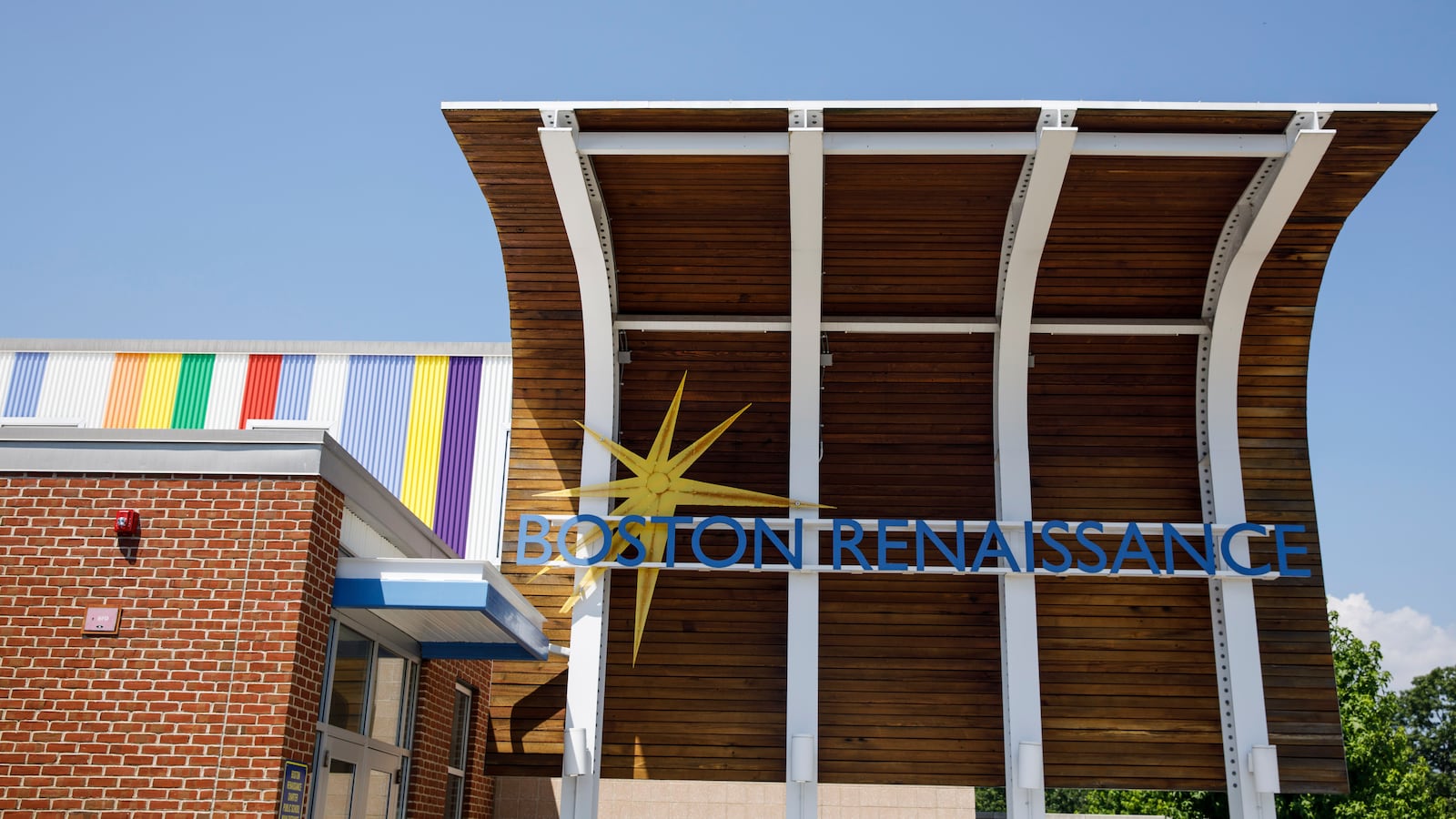Excel Academy in Boston started as a single charter school in 2003. Nine years later, its leaders created a second school in the city, bringing their philosophy and some original staff members to the offshoot.
The network now spans four schools, and Nina Cronan, who once worked at the original campus and currently leads one of the newer schools, said they have key similarities: their college pennants on display, their exams and curriculum, even their policy that teachers rotate classrooms while students stay put.
“We have shared and used a lot of the existing systems from the flagship campus in our school, even though we are a different building,” she said.
Excel’s expansion was part of a two-year growth spurt for charter schools in Massachusetts, after the state law changed in 2010 to help charter schools with successful track records add new sites.
Now a new study finds that Excel and the other Boston charters maintained their high performance as they rapidly grew — perhaps because of how closely they were able to emulate original schools’ practices.
“The average effectiveness of Boston’s charter middle school sector increased after the reform despite a doubling of charter market share,” write researchers Sarah Cohodes of Columbia Teachers College, Elizabeth Setren of Tufts, and Christopher Walters of Berkeley.
The results are significant because they illustrate a potential benefit of one controversial aspect of some charter school networks: “a highly standardized school model that limits teacher discretion,” as the researchers put it.
The findings also differ from some past research, which has found that some networks see their academic performance weaken a bit as they grow.
So what’s going on in Boston? The new study, which has not been formally peer-reviewed, is the latest in a long line of research showing that students improve substantially on tests after attending one of the city’s charter schools.
On average, a middle schooler who started at the 50th percentile in performance jumped to the 58th percentile in math and 55th percentile in English after one year at a charter middle school, the latest study finds. (The researchers use lottery data for 14 of the city’s 15 charter middle schools to be sure that the differences in performance were the result of charter attendance.)
Most of Boston’s charter schools seem to use a “no excuses” approach, a somewhat ill-defined term that many charter leaders now reject as pejorative. The researchers define it as including strict behavior standards, a college prep curriculum, student uniforms, and “high expectations.”
The study can’t isolate which aspects of the approach are successful at raising test scores, or if the results are driven by other characteristics of the schools. But the researchers do note that the “expansion” schools had school days and school years of the same length, and devoted the same amount of time to math and reading as their flagship schools.
“Expansion schools similarly implemented their parent campuses’ No Excuses practices, tutoring, homework help, and Saturday school programs,” they write.
Comparisons to Boston’s district schools are tricky, since the data is limited. But Boston’s charters generally had fewer experienced and credentialed teachers, longer school days and higher suspension rates. Charters also enrolled more black and more female students, and fewer students with disabilities and those learning English, though that gap closed substantially after the 2010 expansion law.
The success of these schools’ replication gives a boost to the “portfolio model,” whose backers argue that good schools should grow and that bad ones should be closed.
Others are likely to react skeptically, especially since the Boston results are limited to test scores.
A recent report from the American Enterprise Institute, a conservative think tank, questioned that portfolio philosophy, pointing out that there is sometimes a disconnect between schools’ test score growth and high school graduation rates. (In Boston specifically, previous research showed that charter high schools boosted four-year college enrollment, but actually reduced on-time high school graduation.)
Meanwhile, other research on this replication strategy is less rosy.
Studies of KIPP charter schools nationwide and charter schools in Newark, New Jersey (most of which are affiliated with the KIPP or Uncommon networks) show that performance declined as the number of schools grew, though in both cases the charters still substantially outstripped comparison district schools.
Few charter networks have had such detailed analyses of their performance done while they were expanding, but research on networks broadly has found that a number of large ones post high scores, though others are average or low performers. Charter schools also weren’t successful at raising test scores in the case of Tennessee’s Achievement School District, which had select networks take over struggling district schools.
And there may be other reasons Boston families and policymakers don’t want to see charters continue to grow. Massachusetts voters, including those in Boston, roundly rejected an effort at further expand the state’s charter sector in 2016. Critics emphasized that more charters meant fewer resources for traditional public schools.
Correction: A previous version of this story incorrectly referred to certain Boston charter schools that did not use a “no excuses” approach. That reference has been removed.


